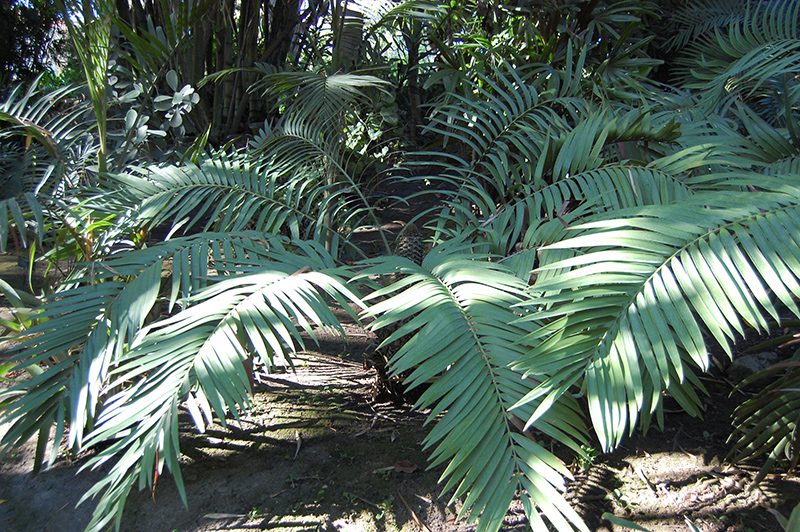Mexican Horncone
Description
An attractive, medium sized cycad with a trunk up to 2 feet, and long, dark green leaves forming a graceful crown around a spiny cone; an attractive accent or container plant; must be well drained and prefers slightly acidic soil
Landscape Attributes
Mexican Horncone is a spreading evergreen perennial with a shapely form and gracefully arching foliage. Its relatively coarse texture can be used to stand it apart from other garden plants with finer foliage.
Mexican Horncone is recommended for the following landscape applications;
Planting & Growing
Mexican Horncone will grow to be about 3 feet tall at maturity, with a spread of 10 feet. It grows at a slow rate, and under ideal conditions can be expected to live for 70 years or more. As an evegreen perennial, this plant will typically keep its form and foliage year-round.
This plant does best in partial shade to shade. It is very adaptable to both dry and moist growing conditions, but will not tolerate any standing water. It is considered to be drought-tolerant, and thus makes an ideal choice for a low-water garden or xeriscape application. It is not particular as to soil type or pH. It is quite intolerant of urban pollution, therefore inner city or urban streetside plantings are best avoided. This species is not originally from North America, and parts of it are known to be toxic to humans and animals, so care should be exercised in planting it around children and pets. It can be propagated by division.
Mexican Horncone is a fine choice for the garden, but it is also a good selection for planting in outdoor pots and containers. Because of its height, it is often used as a 'thriller' in the 'spiller-thriller-filler' container combination; plant it near the center of the pot, surrounded by smaller plants and those that spill over the edges. It is even sizeable enough that it can be grown alone in a suitable container. Note that when growing plants in outdoor containers and baskets, they may require more frequent waterings than they would in the yard or garden. Be aware that in our climate, this plant may be too tender to survive the winter if left outdoors in a container. Contact our experts for more information on how to protect it over the winter months.

